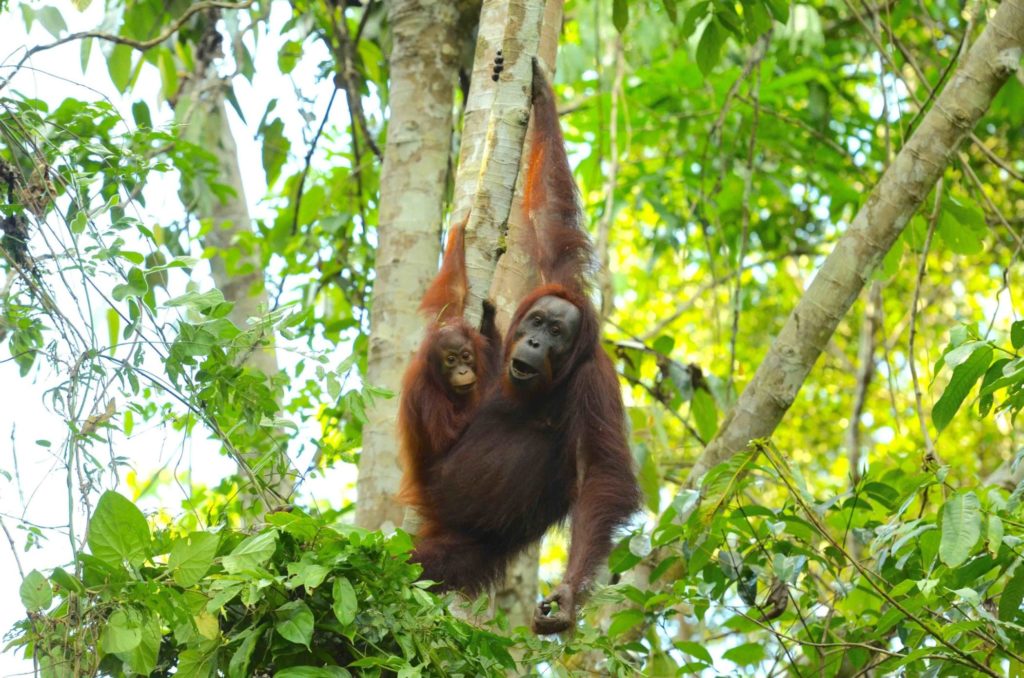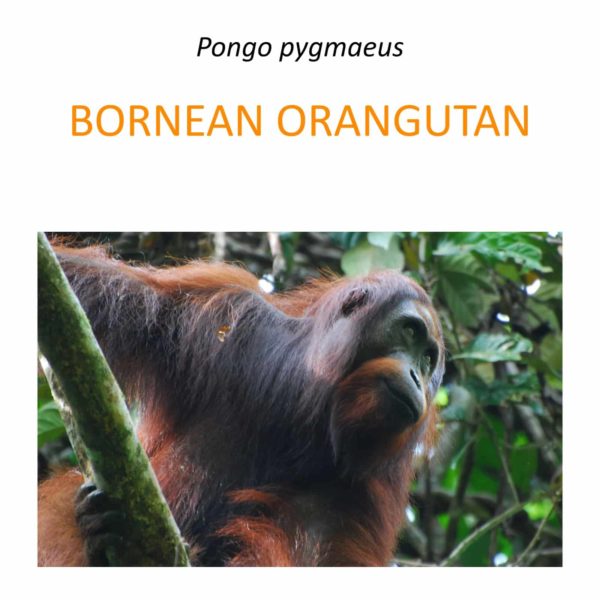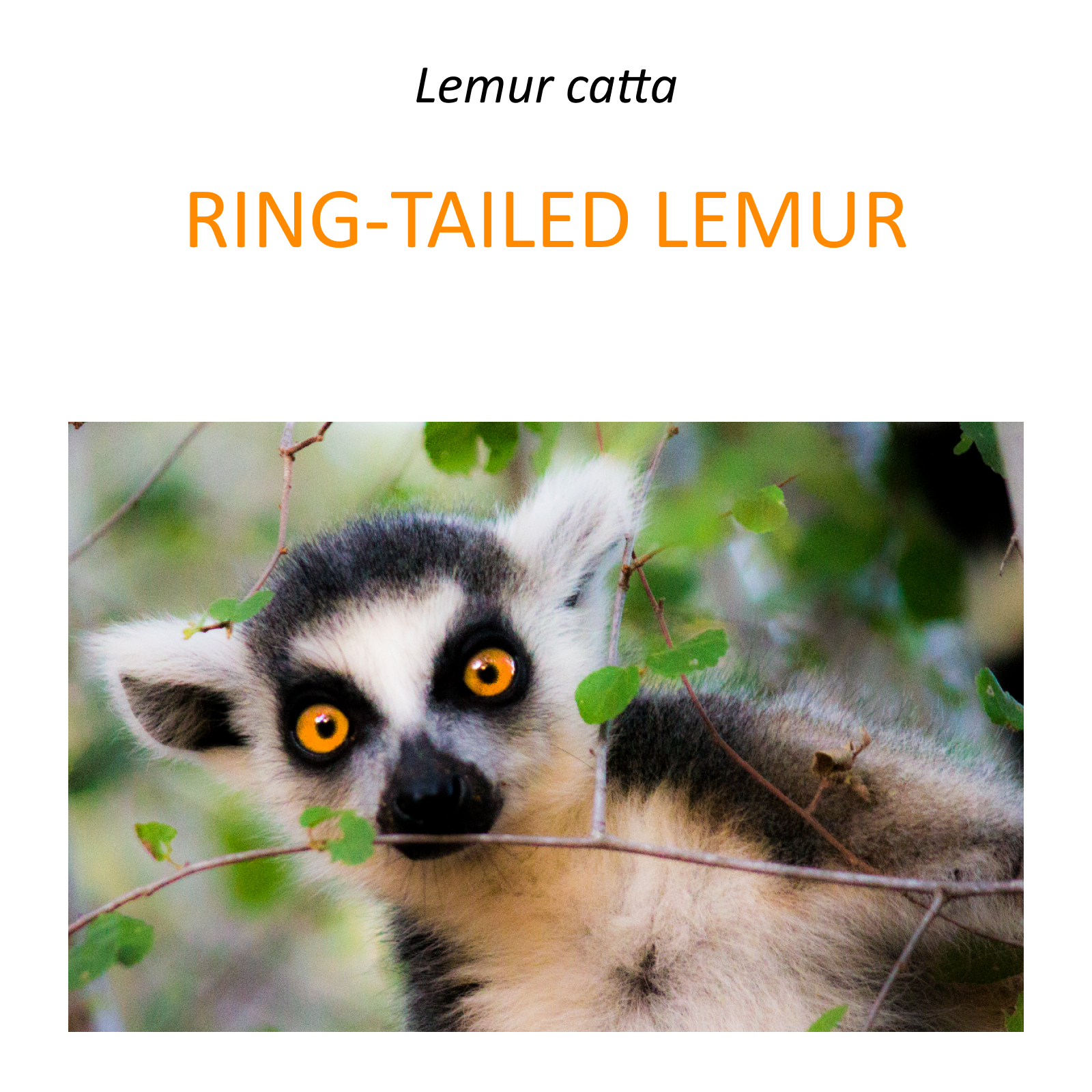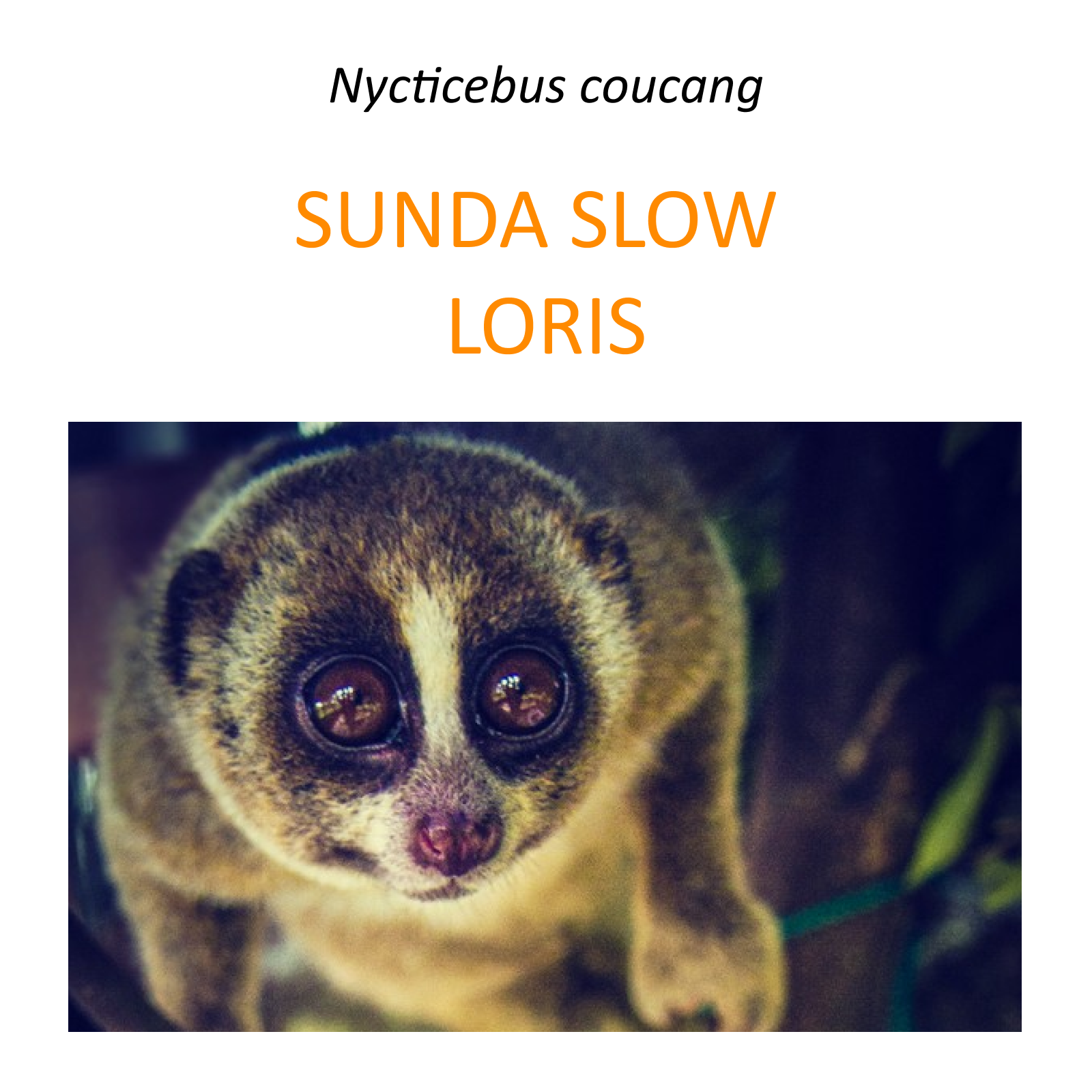Bornean orangutans protection programme
Description
Species name: BORNEAN ORANGUTAN
Latin name: Pongo pygmaeus
Country: Malaysia – Borneo
Project website: www.hutan.org.my
Orangutans are great apes found in the rainforests of Borneo and Sumatra. There are three distinct species of orangutans: the Bornean, Sumatran and Tapanuli.
Currently, the International Union for Conservation of Nature (IUCN) has classified all species of orangutans as Critically Endangered. The major threat to orangutans is poaching and degradation of their natural habitat, which has led to a 92% decline in their population over the last 100 years.

Bornean orangutans (Pongo pygmaeus) are considered the largest orangutan species in terms of size. Males can reach 75kg and grow up to 1.5m. Due to their arboreal lifestyle, their arms are 30% longer than their legs to help them to move between branches. The skin on the face of orangutans is black in colour and naked. The face of mature males also has fleshy cheek pouches (subcutaneous fat deposits) along with throat glomeruli, which enable them to produce a deep, resonating sound in the forest.
What we do
HUTAN is located in the northern part of Borneo, in the state of Sabah, which is home to about one-fifth of the Bornean orangutan population. A key element of species conservation is conducting research and monitoring to assess the distribution of the orangutan population. HUTAN has developed a unique methodology for observing orangutans, through which, for over 20 years, it has been following the fate of these magnificent animals in Sabah province. Through these observations, the world has learned that orangutans can adapt to secondary forest conditions, which does not preclude their existence in deforested areas! Hutan monitors plantation areas and works on creating ecological corridors and so-called bridges connecting forests so that orangutans can move across larger areas without destroying plantations.








